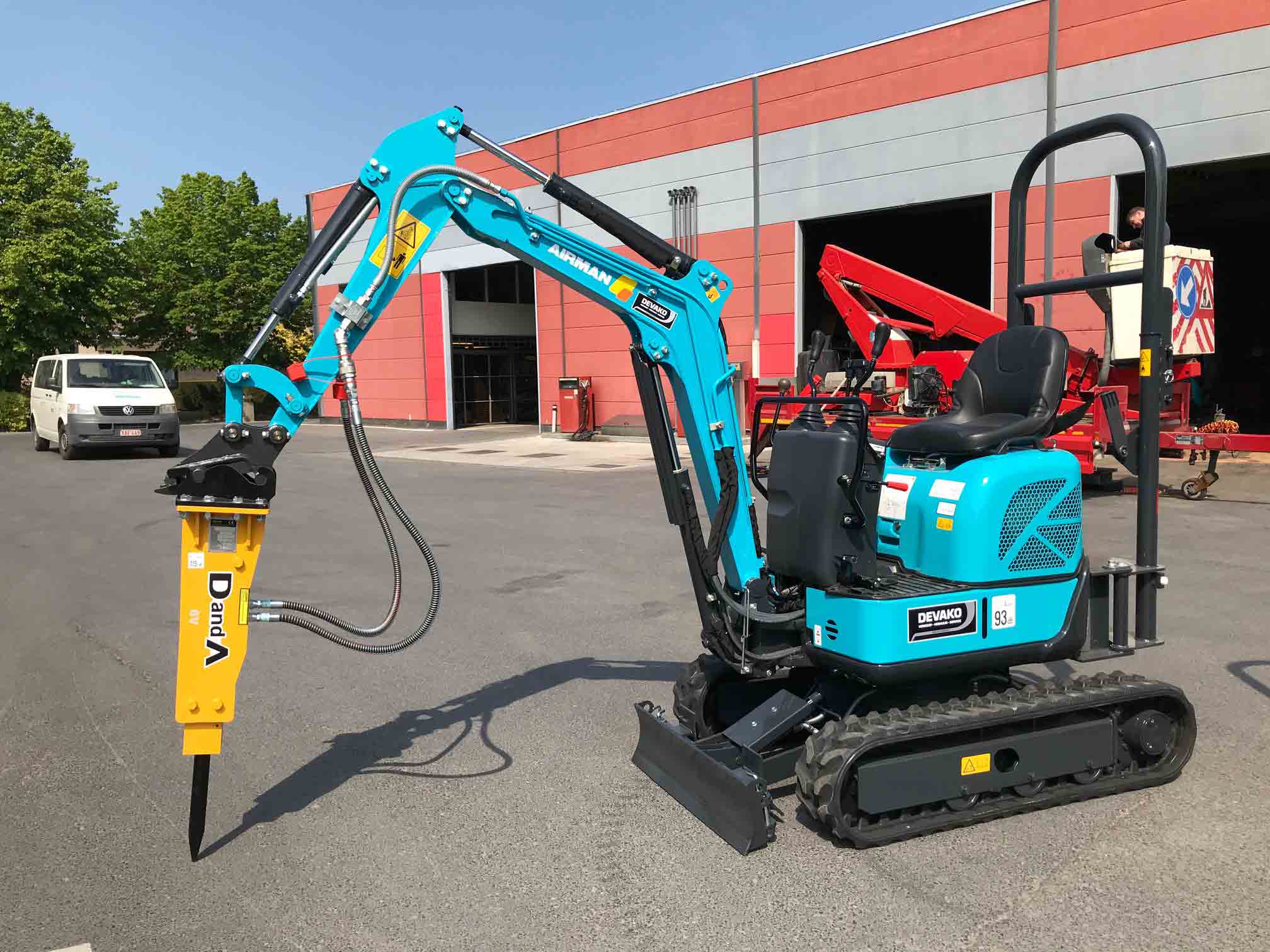If you need to break rocks, concrete, asphalt or any other hard surface, you’ll likely need a rock breaker. In this article, we’ll look at what a rock breaker does, how to choose the right one, and, most importantly, some tips for maintaining your rock breaker.
What is a rock breaker?

A rock breaker, also known as a rock breaker hammer or rock hammer, is an attachment used on excavators for breaking rocks or other dense structures. The excavator’s hydraulic system powers the rock breaker to work in a percussive motion to break large rocks and structures into smaller, more manageable pieces.
By attaching the rock breaker to the extension arm of your excavator, you can reach further, giving you more flexibility in approaching the rocks you need to demolish. Rock breakers are used in all sorts of industries, such as mining, construction, civil, agricultural and more.
Choosing the right rock breaker for your project
There are many different rock breakers on the market, so it’s important to choose the right one for your needs. Ideally, you need to match the rock breaker to your excavator. For example, Earthmoving Equipment Australia offers rock breakers suited for 1t mini excavators up to 55t excavators.
To make the right choice, you need to know the types and sizes of the rocks you need to break and, most importantly, the size and capacity of your excavator. You need to ensure your equipment is strong enough to handle the job. But if you’re not an earthmoving equipment expert, don’t worry because our team can always provide the right advice to ensure you get a rock breaker that suits your project perfectly.
Rock breaker maintenance
Choosing the right rock breaker for your needs is only half the job, and it won’t amount to much if you don’t look after it properly. Remember that rock breakers are hydraulic devices, meaning a little more maintenance is required than for a standard manual piece of equipment. Here are some tips for keeping your rock breaker in good working order.
Checking nitrogen levels
Nitrogen provides the pressure used in your hydraulic device, and it’s a crucial factor that needs to be checked before use. Nitrogen pressure levels can change depending on the temperature of your work site, which is why you should check the levels every time. In addition, certain tasks require different pressure levels.
For example, the pressure you need to break loose rocks is likely very different from the pressure level required for breaking asphalt. So, understand your job, the temperature in the area, and the pressure required to complete the job. This makes it much easier to adjust your nitrogen levels accordingly.
Checking hydraulic hoses and couplings for damage
Aside from your nitrogen levels, your hydraulic hoses do most of the work when using a rock breaker. Your hoses should be made from strong, durable materials because of the power of work they need to handle. However, they also must be flexible and fixed at the correct length. Every rock breaker is different, but the hoses need to be long enough that they aren’t stretched to their limit during use but short enough to ensure they don’t catch on anything during operation.
In terms of maintenance, you need to check hoses and couplings for visible signs of damage or wear and tear. If a hose breaks during use, your system will be severely compromised, so visual checks are extremely important.
Servicing regularly
Needless to say, regular servicing of your machinery is paramount. This stands true for vehicles, machinery, and even attachments such as rock breakers. Even if your breaker works fine, it’s important to maintain a regular service schedule. Doing this lets you identify abnormal wear and tear or other signs of minor issues before they become expensive problems. The cost of servicing a rock breaker is far lower than the cost of replacing it completely due to neglect.
Greasing the breaker
Operating a rock breaker involves a lot of moving parts, especially in the breaker itself. You might find that modern rock breakers come fitted with an automatic lubrication function, but many attachments will need manual intervention.
You should grease your breaker regularly to reduce friction between metal parts, maintain a proper working temperature and clear the bushing area of debris that can damage components.
Ensuring the breaker isn’t leaking oil
Checking oil seals is the best way to determine if your rock breaker is leaking oil. Typically, oil will leak from the piston rod if there is an issue with your seal, so these should be checked regularly. First, you’ll need to determine if your breaker is leaking oil, and this can usually be done with a visual inspection. Remember that oil leaks could occur during operation, so you may need to safely stop operating the excavator and check for oil leaks. You can also do this when you first start the machine.
If your rock hammer leaks oil, it’s time to change your oil seals, ensuring you get the right fit for your attachment. For more tips on rock breaker maintenance and selection, contact the team at Earthmoving Equipment Australia. We’ve got the expertise, knowledge and range to ensure you get high-quality rock breakers that are fit for purpose.

